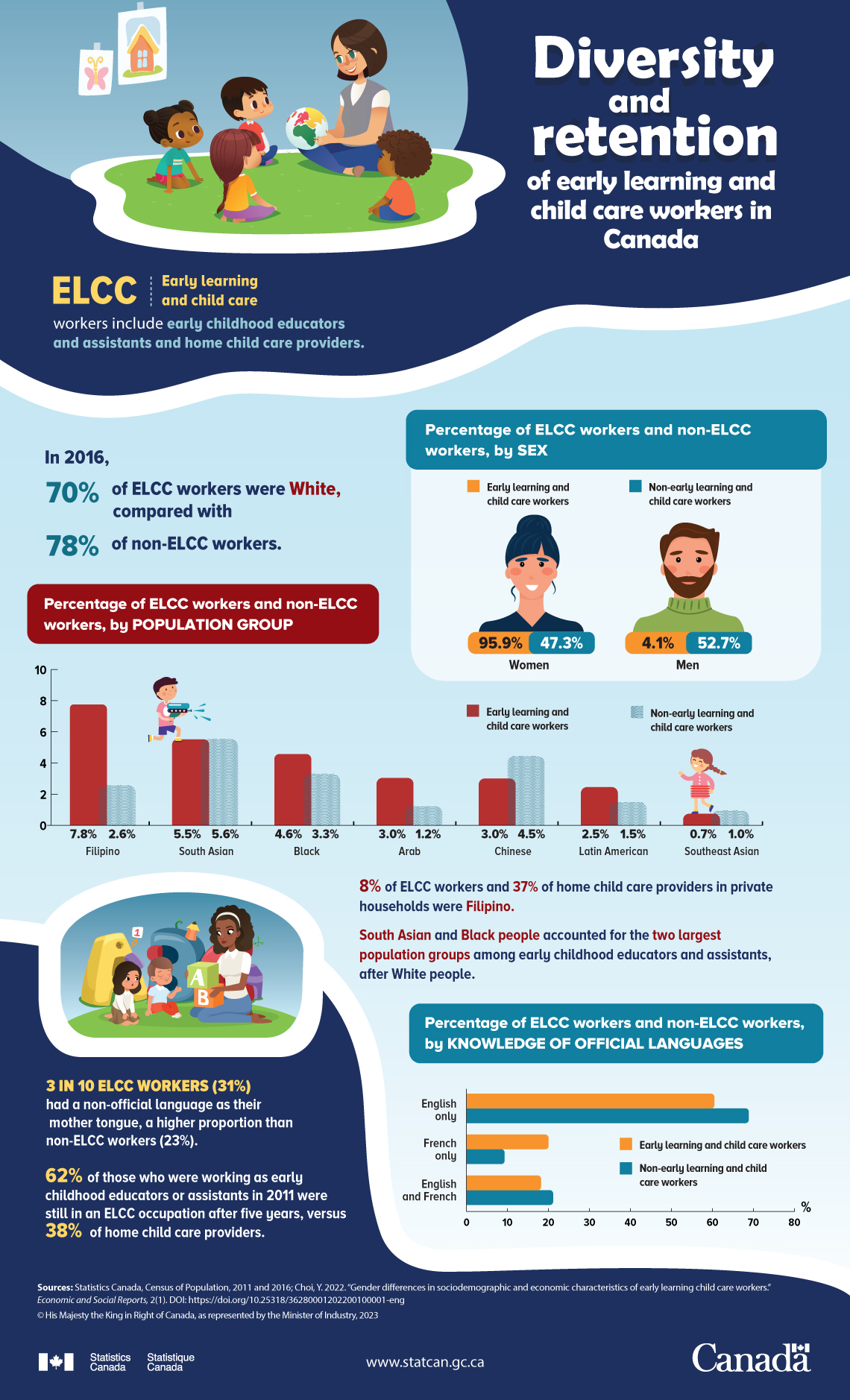Diversity and retention of early learning and child care workers in Canada

Description: Diversity and retention of early learning and child care workers in Canada
Early learning and child care (ELCC) workers include early childhood educators and assistants and home child care providers.
| Sex | Early learning and child care workers | Non-early learning and child care workers |
|---|---|---|
| percentage | ||
| Women | 95.9 | 47.3 |
| Men | 4.1 | 52.7 |
In 2016, 70% of ELCC workers were White, compared with 78% of non-ELCC workers.
| Population group | Early learning and child care workers | Non-early learning and child care workers |
|---|---|---|
| percentage | ||
| Filipino | 7.8 | 2.6 |
| South Asian | 5.5 | 5.6 |
| Black | 4.6 | 3.3 |
| Arab | 3.0 | 1.2 |
| Chinese | 3.0 | 4.5 |
| Latin American | 2.5 | 1.5 |
| Southeast Asian | 0.7 | 1.0 |
- 8% of ELCC workers and 37% of home child care providers in private households were Filipino.
- South Asian and Black people accounted for the two largest population groups among early childhood educators and assistants, after White people.
3 in 10 ELCC workers (31%) had a non-official language as their mother tongue, a higher proportion than non-ELCC workers (23%).
| Knowledge of official languages | Early learning and child care workers | Non-early learning and child care workers |
|---|---|---|
| percentage | ||
| English only | 60 | 69 |
| French only | 20 | 9 |
| English and French | 18 | 21 |
62% of those who were working as early childhood educators or assistants in 2011 were still in an ELCC occupation after five years, versus 38% of home child care providers.
Sources: Statistics Canada, Census of Population, 2011 and 2016; Choi, Y. 2022. “Gender differences in sociodemographic and economic characteristics of early learning child care workers.” Economic and Social Reports, 2(1). DOI: https://doi.org/10.25318/36280001202200100001-eng
- Date modified: